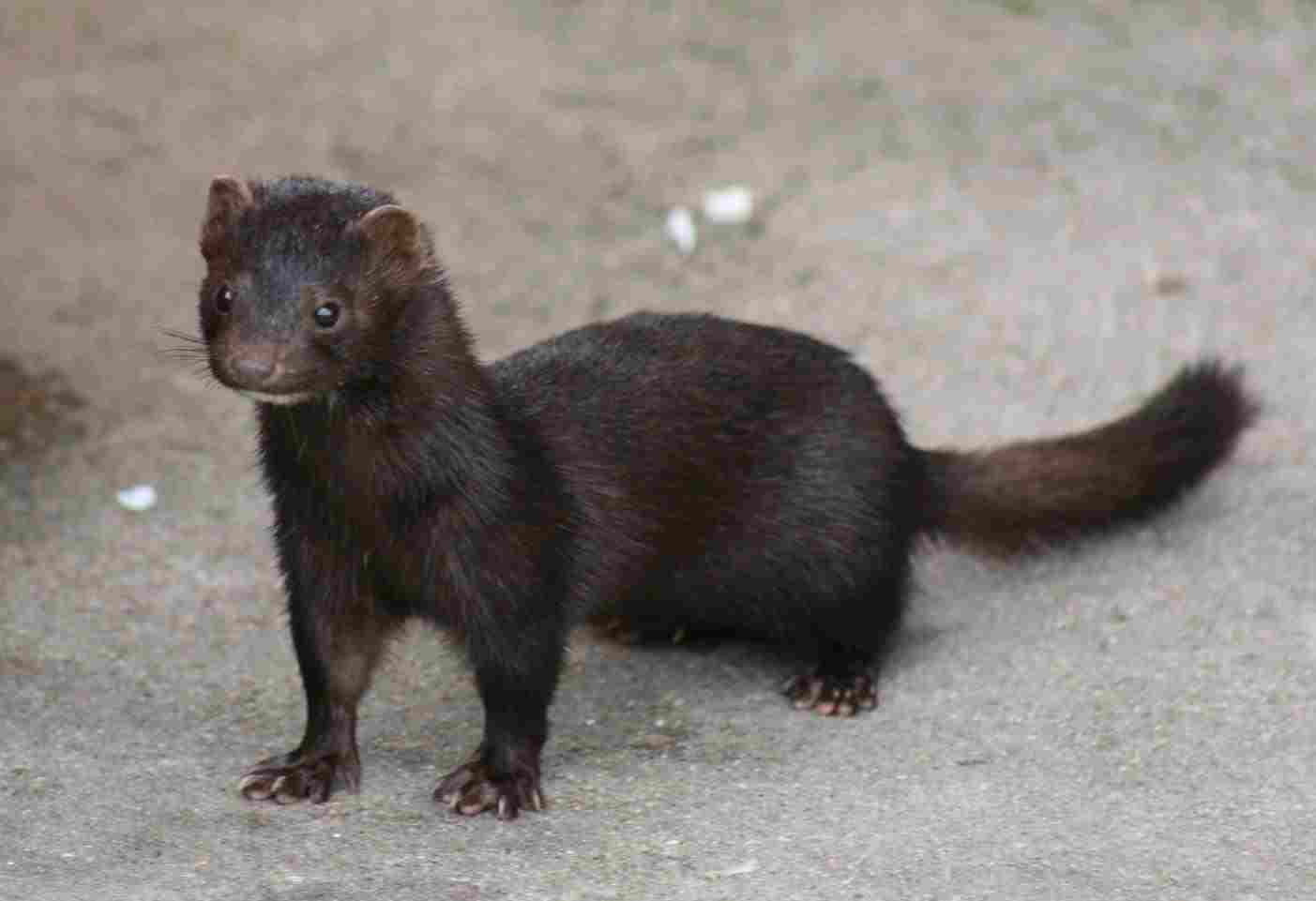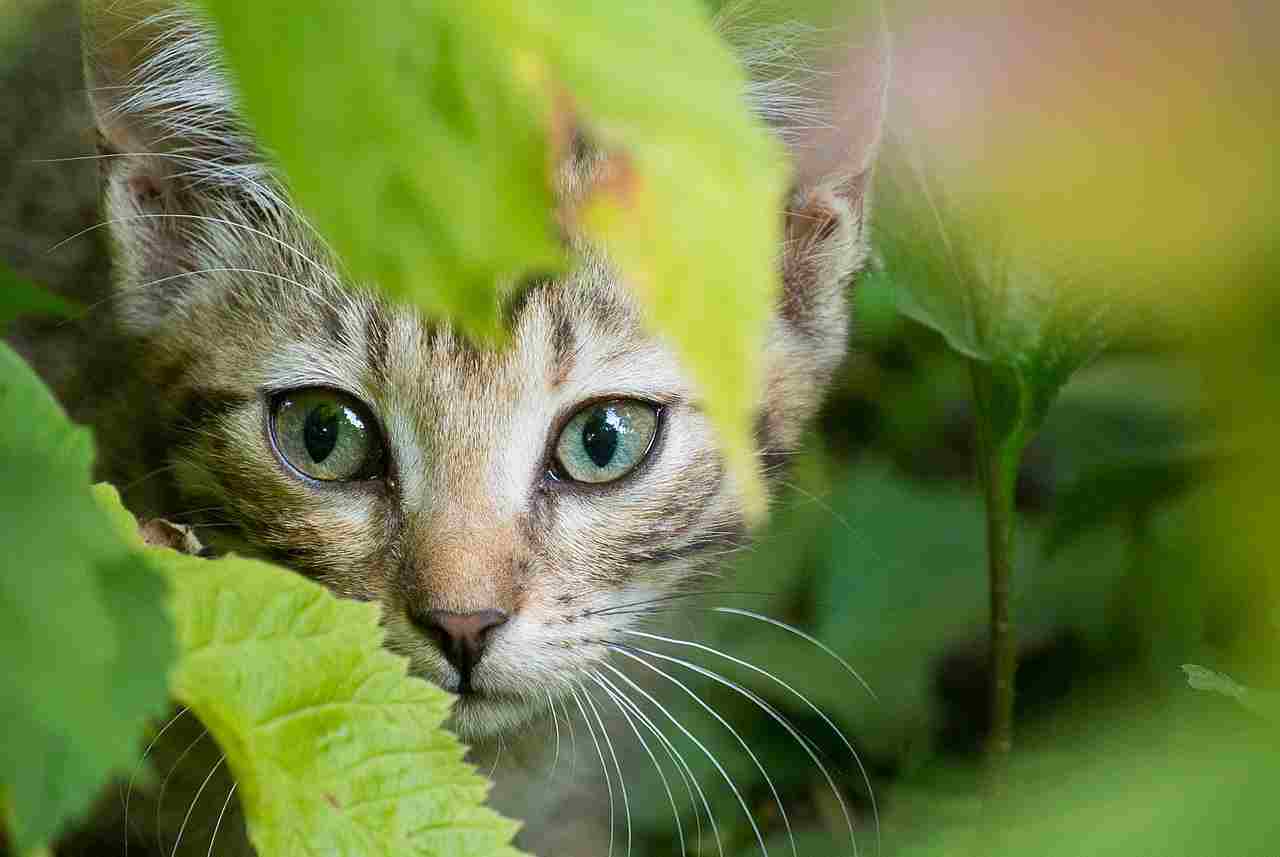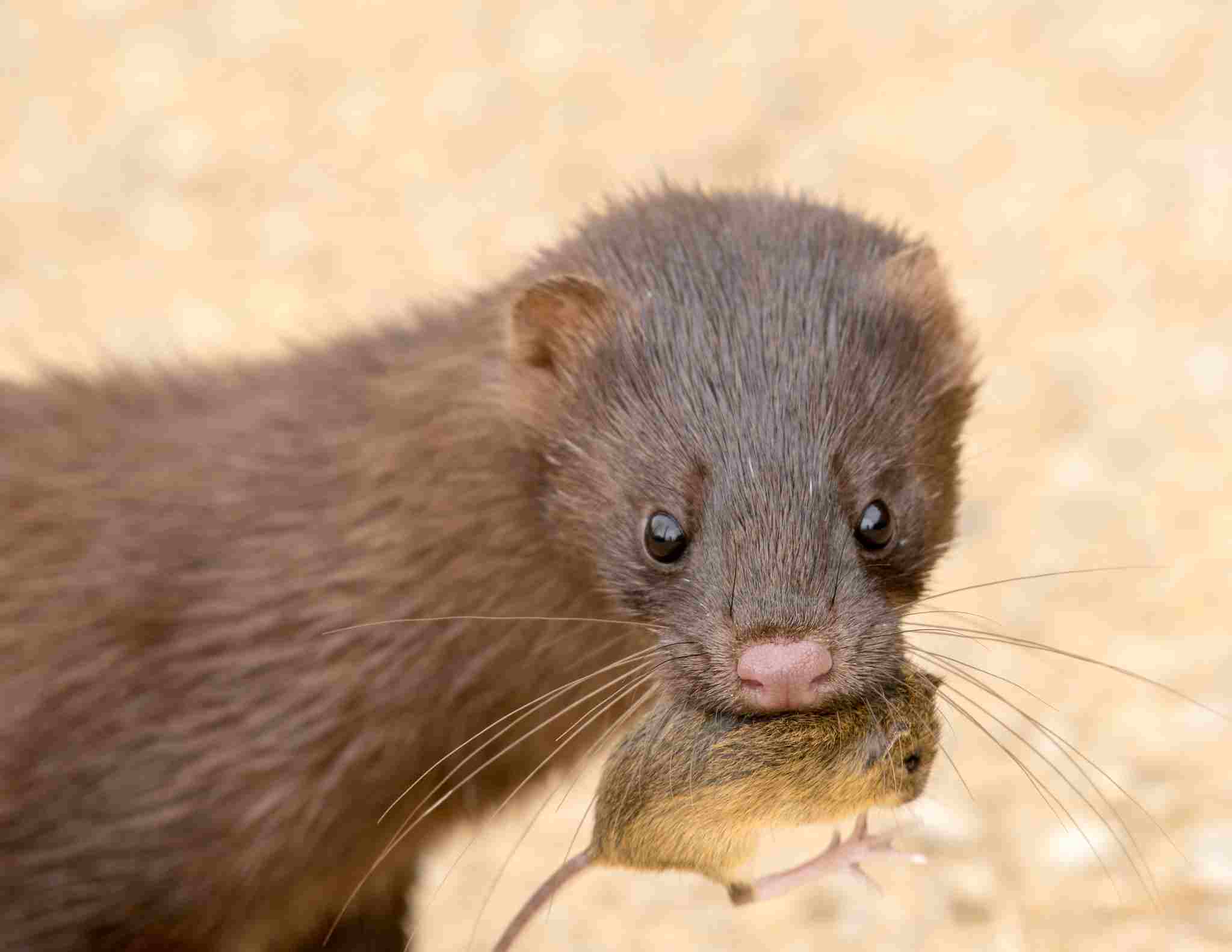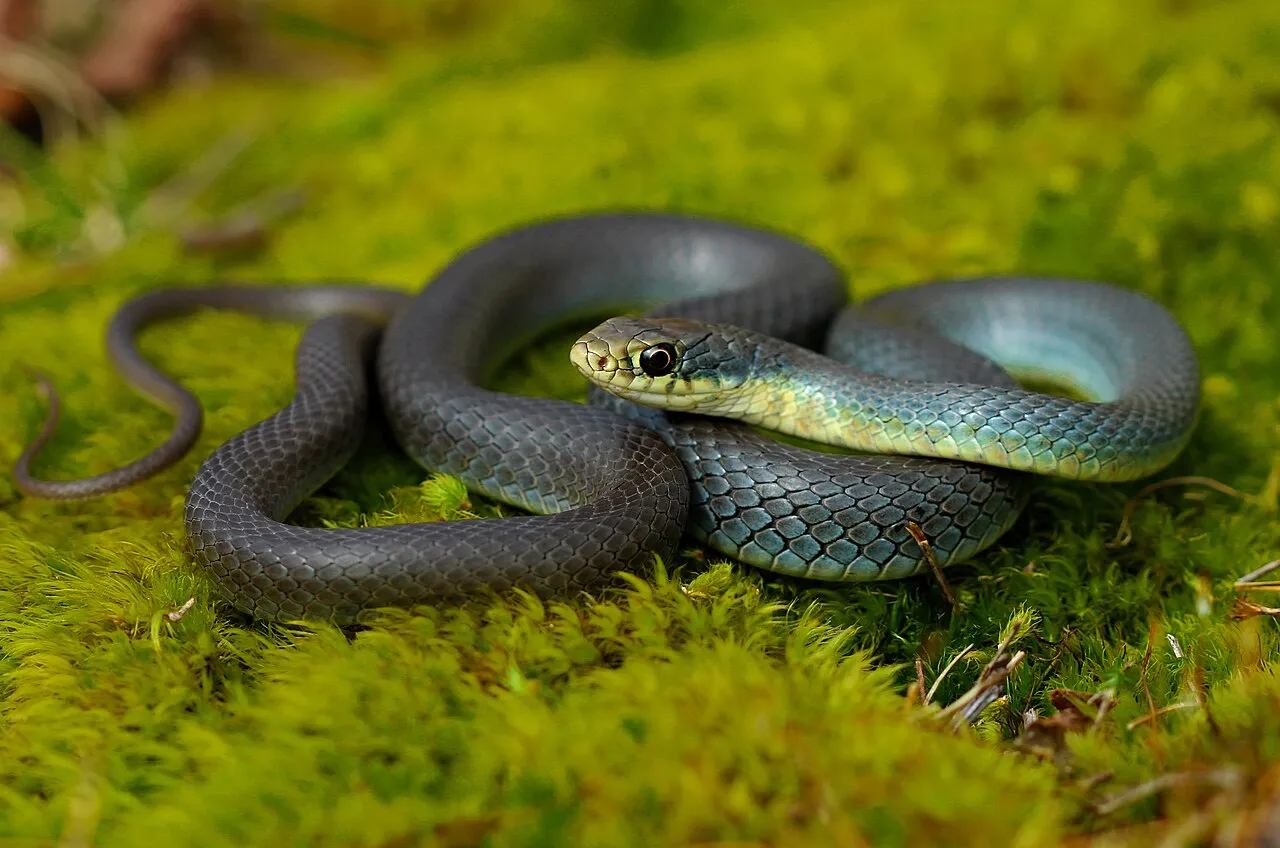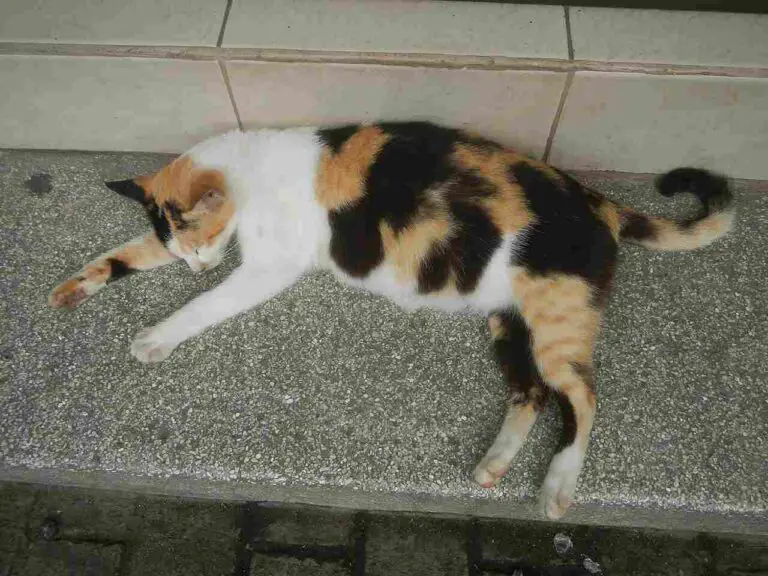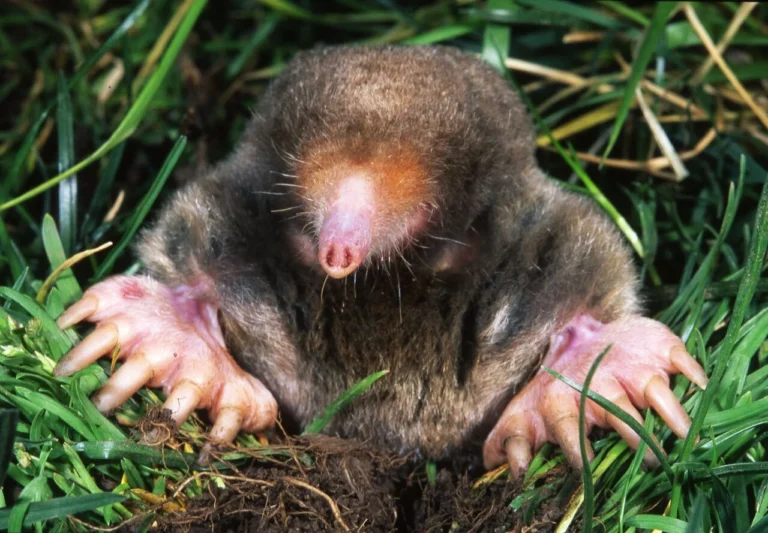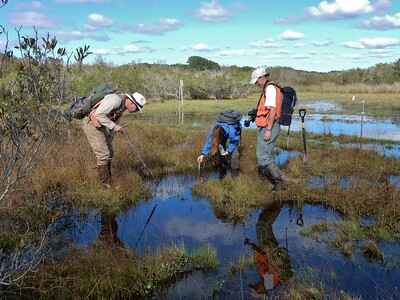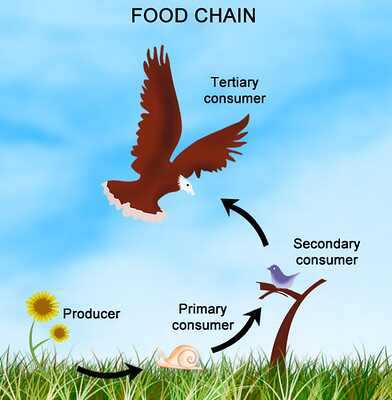Stoat Vs Ferret Size, Weight, Overall Comparison
In considering a potential clash between a stoat and a ferret, we explore the shared and distinct characteristics of these small carnivores. Notably, the larger and heavier stature of the ferret positions it as the likely victor in a physical confrontation. Additionally, differentiation between the two species is facilitated by observing specific features, such as the ferret’s dark facial coloration and the tail color on the stoat.
Stoat vs Ferret: Assessing Differences and Predicting Outcomes
In a potential face-off between a stoat and a ferret, the outcome is influenced by their shared mustelid traits and the discernible differences that set them apart. The larger and heavier build of the ferret is a critical factor in predicting the likely winner in a physical confrontation.
I). Ferret’s Larger and Heavier Stature:
– Ferrets, as domesticated members of the mustelid family, are generally larger and heavier than wild stoats. This size advantage contributes to the ferret’s potential dominance in a physical confrontation.

II). Stoat’s Characteristics:
– Stoats, also known as short-tailed weasels, exhibit slender bodies, short legs, and a distinctive coat that changes color with the seasons. Observing the stoat’s tail color becomes a key identifier.
III). Ferret’s Characteristics:
– Ferrets share many physical traits with stoats but are typically larger and heavier. Domestication has led to variations in coat color, but the ferret’s overall size advantage is consistent.
IV). Differentiation: Facial Coloration and Tail Color:
– One way to differentiate between a stoat and a ferret is by observing specific features. Ferrets often display a dark facial mask, a distinctive characteristic not commonly seen in stoats. Additionally, the tail color of a stoat, which remains black-tipped even in winter, contrasts with the solid-colored tail of a ferret.
V). Predicting Outcomes:
– In a physical confrontation, the ferret’s larger and heavier build positions it as the likely victor over a stoat. The size advantage contributes to the ferret’s strength and potential dominance in such encounters.
VI). Real-World Observations:
– Real-world observations and interactions between stoats and ferrets can be influenced by various factors, including territorial behavior, adaptability, and individual differences. However, the inherent size advantage of the ferret remains a key factor in predicting outcomes.
VII). Overall Dynamics:
– In this examination, the ferret’s larger and heavier stature establishes it as the likely winner in a fight against a stoat. While both share mustelid traits, differentiation can be achieved through specific features such as the ferret’s dark facial coloration and the tail color on the stoat, showcasing the nuanced dynamics within the mustelid family.
*Details of Comparison
| Criteria | Stoat | Ferret |
| 1. Taxonomy | Mustela erminea |
Mustela putorius furo
|
| 2. Appearance | Slender body, brown/white fur |
Robust build, diverse coat colors
|
| 3. Size | 12-16 inches | 18-24 inches |
| 4. Weight | 6-12 ounces | 1.5-4 pounds |
| 5. Bite Force (PSI) | Limited data | Limited data |
| 6. Physical Offensive | Agility, sharp claws |
Strong jaw, teeth, domestication impact
|
| 7. Physical Defensive | Agile, camouflage, burrowing |
Agile, quick reflexes
|
| 8. Speed | 15-20 mph (estimated) |
Agility (specific speed data unavailable)
|
| 9. Agility | Highly agile |
Agile, climbs, navigates tight spaces
|
| 10. Senses | Sharp vision, keen smell |
Enhanced hearing, moderate vision/smell
|
| 11. Overall Physical | Specialized for hunting and survival |
Diverse physical capacities, domestication
|
| 12. Habitat Preference(s) | Diverse habitats, adaptable |
Human-inhabited areas, domesticated
|
| 13. Tracks | Paw prints with claw marks |
Similar to stoats, varies based on context
|
| 14. Lifespan | 1-3 years (wild) |
5-10 years (domesticated)
|
| 15. Mode of Feeding | Carnivorous, actively hunts |
Carnivorous, may rely on provided food
|
| 16. Intelligence | Problem-solving skills |
Curiosity, playfulness, trainable
|
| 17. Social Behavior | Solitary, brief social during mating |
Social, benefits from companionship
|
| 18. Mode of Reproduction | Seasonal breeding |
Induced ovulators, can breed year-round
|
| 19. Parental Behavior | Solitary care, weaning around 5 weeks |
Communal care, kits weaned 6-8 weeks
|
| 20. Proximity to Human-Inhabited Areas | Limited proximity in the wild |
Closely associated with human-inhabited areas
|
| 21. Behavior Toward Humans | Elusive, not dangerous (wild) |
Sociable, trainable, minimal risk (domesticated)
|
| 22. Danger Posed to Humans | Generally not dangerous |
Generally not dangerous, may bite if not handled properly
|
| 23. Associated Precautions | Caution in wild encounters |
Responsible handling, ferret-proofing indoor spaces
|
| 24. Conservation Status | “Least Concern,” stable populations |
Not evaluated (domesticated), bred for specific purposes
|
Key Points
- Stoats have a smaller, sleeker build, emphasizing agility and seasonal color change for hunting.
- Ferrets are larger, robust, with diverse coat colors influenced by domestication.
- Stoats exhibit agility and camouflage for defense, while ferrets rely on a strong jaw.
- Stoats have a seasonal breeding pattern; ferrets can breed year-round.
- Stoats thrive in diverse natural habitats, while ferrets are closely associated with human-inhabited areas.
- Stoats are generally not dangerous; domestic ferrets are sociable and pose minimal risk.
- Stoats classified as “Least Concern,” with a lifespan of 1-3 years. Ferrets are not conservation-evaluated, with a lifespan of 5-10 years (domesticated).
1. Taxonomy:
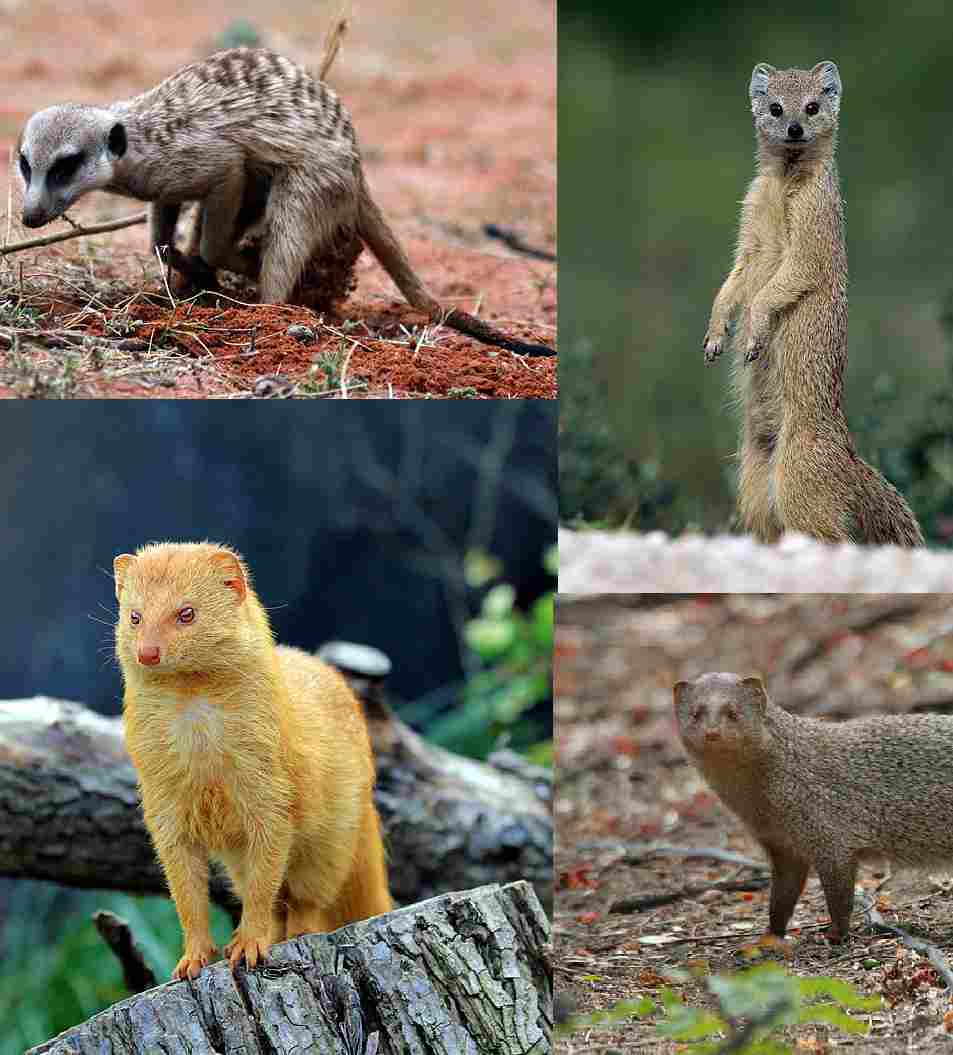
Stoat (Mustela erminea):
Kingdom: Animalia
Phylum: Chordata
Class: Mammalia
Order: Carnivora
Family: Mustelidae
Genus: Mustela
Species: M. erminea
Ferret (Mustela putorius furo):
Kingdom: Animalia
Phylum: Chordata
Class: Mammalia
Order: Carnivora
Family: Mustelidae
Genus: Mustela
Species: M. putorius furo
2. Appearance:
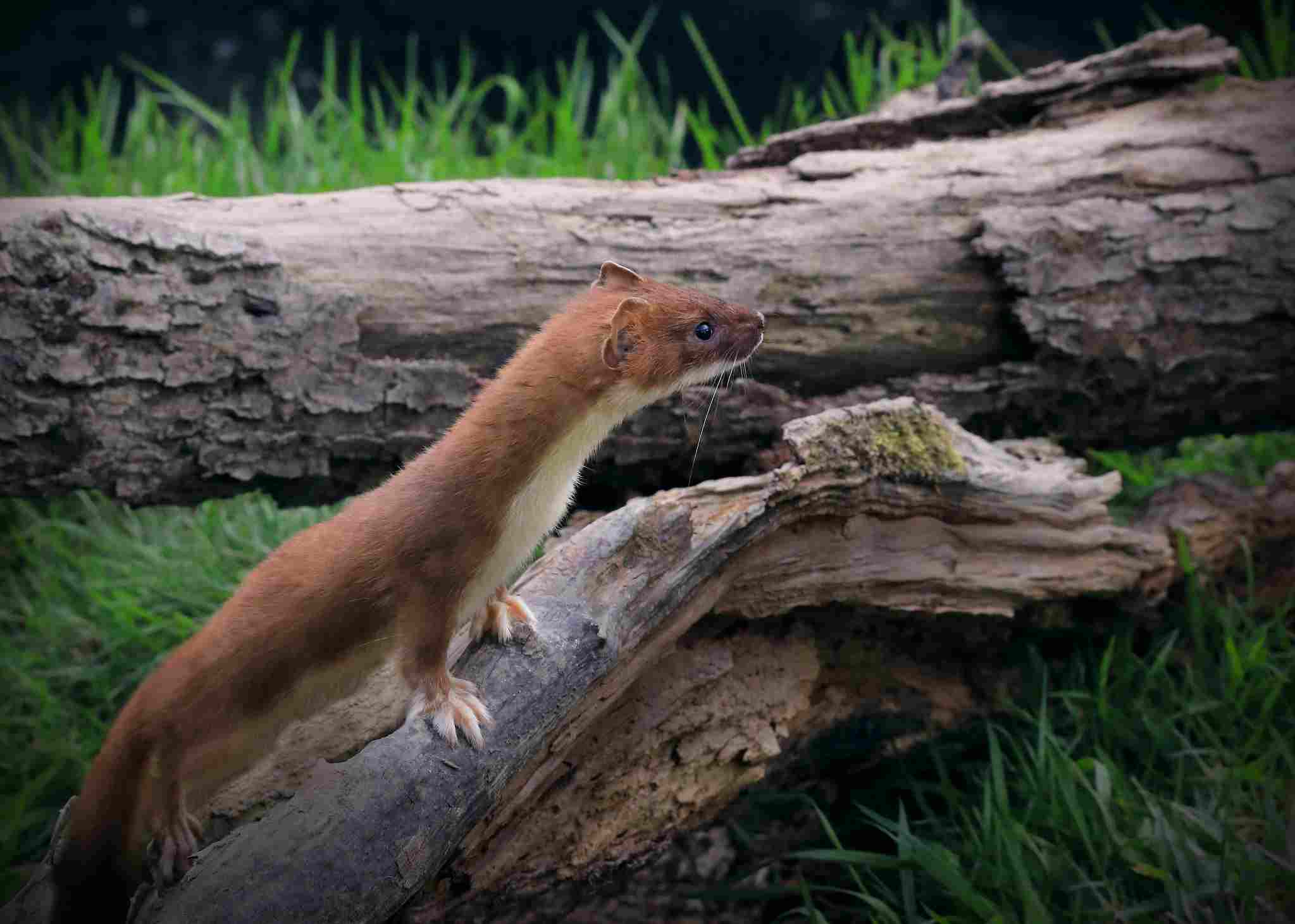
Stoat:
Slender body with a long, flexible frame.
Brown fur in summer, transitioning to white in winter with a black-tipped tail.
Sharp, black eyes and a pointed snout.
Ferret:
More robust build with a less elongated body.
Coat color varies widely, including albino, sable, or a mix of colors.
Round face, and the tail is often shorter compared to stoats.
Comparison:
Stoats have a distinct seasonal color change, adapting to their surroundings.
Ferrets exhibit greater color variability due to domestication and selective breeding.
Ecological Implications:
Stoats’ seasonal camouflage aids in hunting and evading predators.
Ferrets’ diverse coat colors might result from human-driven breeding preferences.
3. Size:
Stoat:
Body length: 12 to 16 inches (30 to 40 cm).
Tail length: 4.7 to 6.7 inches (12 to 17 cm).
Ferret:
Body length: 18 to 24 inches (45 to 60 cm).
Tail length: 4 to 7 inches (10 to 18 cm).
Comparison:
Ferrets are generally larger than stoats in both body and tail length.
Ecological Implications:
Size differences impact prey selection, with stoats targeting smaller prey.
4. Weight:
Stoat:
Weight: 6 to 12 ounces (170 to 340 grams).
Ferret:
Weight: 1.5 to 4 pounds (680 grams to 1.8 kg).
Comparison:
Ferrets are substantially heavier than stoats.
Ecological Implications:
Weight influences energy requirements, potentially impacting prey consumption.
5. Bite Force (PSI – Pounds per Square Inch):
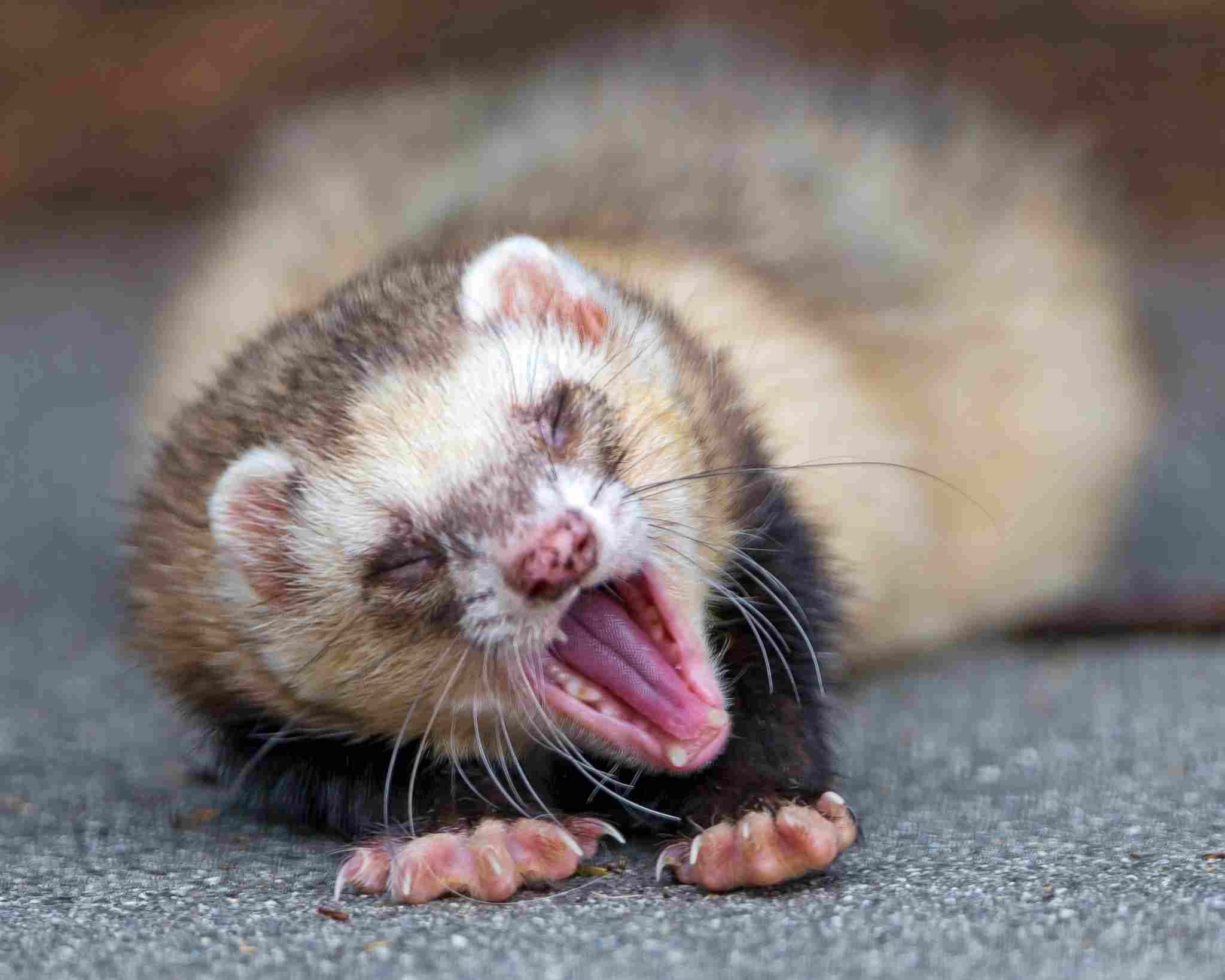
Stoat: Information on stoats’ precise bite force is limited.
Ferret: Limited data on ferrets’ bite force (but could be between 55 and 150 psi, based on known values for closely related/physiologically similar animals).
Comparison:
Research gaps exist regarding the specific bite forces of stoats and ferrets.
Ecological Implications:
Bite force may correlate with hunting strategies, influencing prey selection.
6. Physical Offensive Advantages:
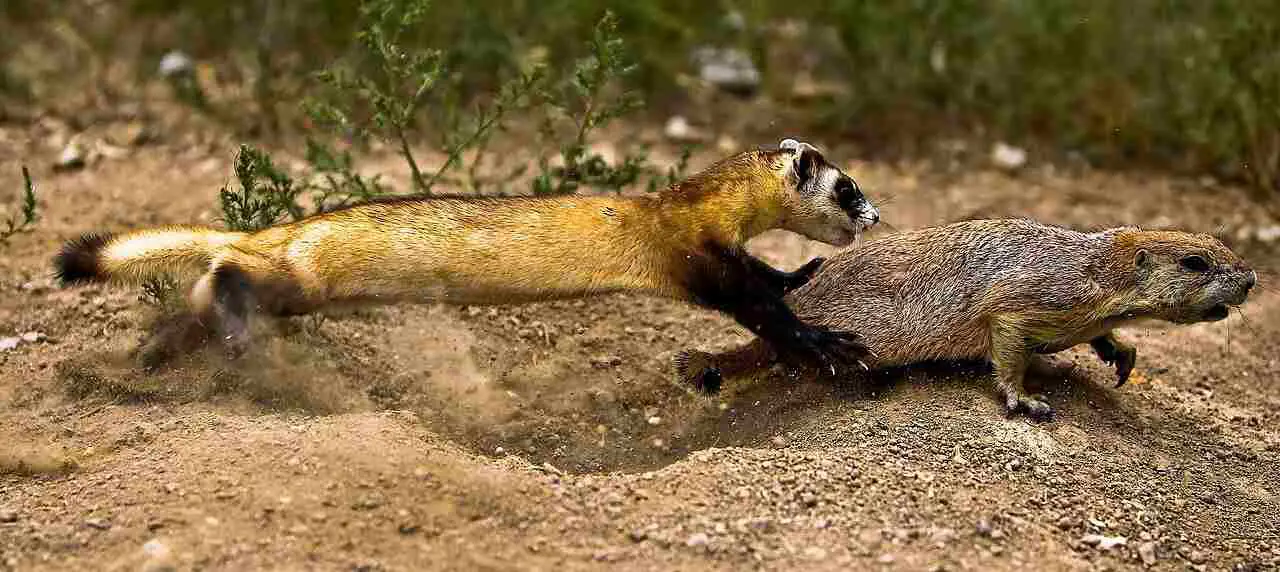
Stoat:
Possesses sharp, retractable claws for effective hunting.
Exhibits exceptional agility, enabling it to pursue and capture prey in various terrains.
Ferret:
Utilizes a strong jaw and sharp teeth for gripping and holding onto prey.
Domestic ferrets may lack some of the specialized hunting adaptations seen in wild stoats.
Comparison:
Stoats rely on agility and sharp claws for offensive maneuvers.
Ferrets emphasize jaw strength as a primary offensive advantage.
Ecological Implications:
The stoat’s agility aids in capturing elusive prey, contributing to its ecological role.
Ferrets may showcase a range of offensive behaviors based on their domestication status.
7. Physical Defensive Advantages:
Stoat:
Can escape into burrows or climb trees to evade predators.
Camouflaged fur provides a defensive advantage by blending into surroundings.
Ferret:
Relies on quick reflexes and agility for evasion.
Domestic ferrets may lack certain defensive adaptations observed in wild stoats.
Comparison:
Stoats employ a combination of environmental adaptations and physical agility for defense.
Ferrets primarily use agility as a defense mechanism.
Ecological Implications:
The stoat’s versatile defensive strategies contribute to survival in diverse habitats.
Domestication may alter ferret defensive behaviors compared to their wild counterparts.
8. Speed (Km/hour or Mile/hour):

Stoat: Estimated to reach speeds of 15 to 20 mph (24 to 32 km/h).
Ferret: Domestic ferrets are agile, but specific speed data may vary.
Comparison:
Stoats are known for their speed, especially during pursuit of prey.
Ecological Implications:
Speed is crucial for catching agile prey and avoiding predators in the wild.
9. Agility:
Stoat: Highly agile, capable of rapid turns and maneuvers.
Ferret: Exhibits agility, navigating tight spaces and displaying climbing abilities.
Comparison:
Both stoats and ferrets showcase agility, adapted to their respective environments.
Ecological Implications:
Agility is fundamental for hunting success and evasion of predators, contributing to the ecological roles of both species.
10. Senses:
Stoat:
Sharp sense of vision for detecting prey at a distance.
Keen sense of smell for tracking and locating food.
Ferret:
Enhanced sense of hearing, useful for detecting subtle sounds.
Moderate vision and sense of smell, adapted for their domesticated lifestyle.
Comparison:
Stoats rely on acute vision and smell for hunting in the wild.
Ferrets, while retaining some senses, may prioritize different sensory information due to domestication.
Ecological Implications:
Sensory adaptations are crucial for both species’ survival, aiding in locating prey and avoiding predators.
11. Overall Physical Capacity:
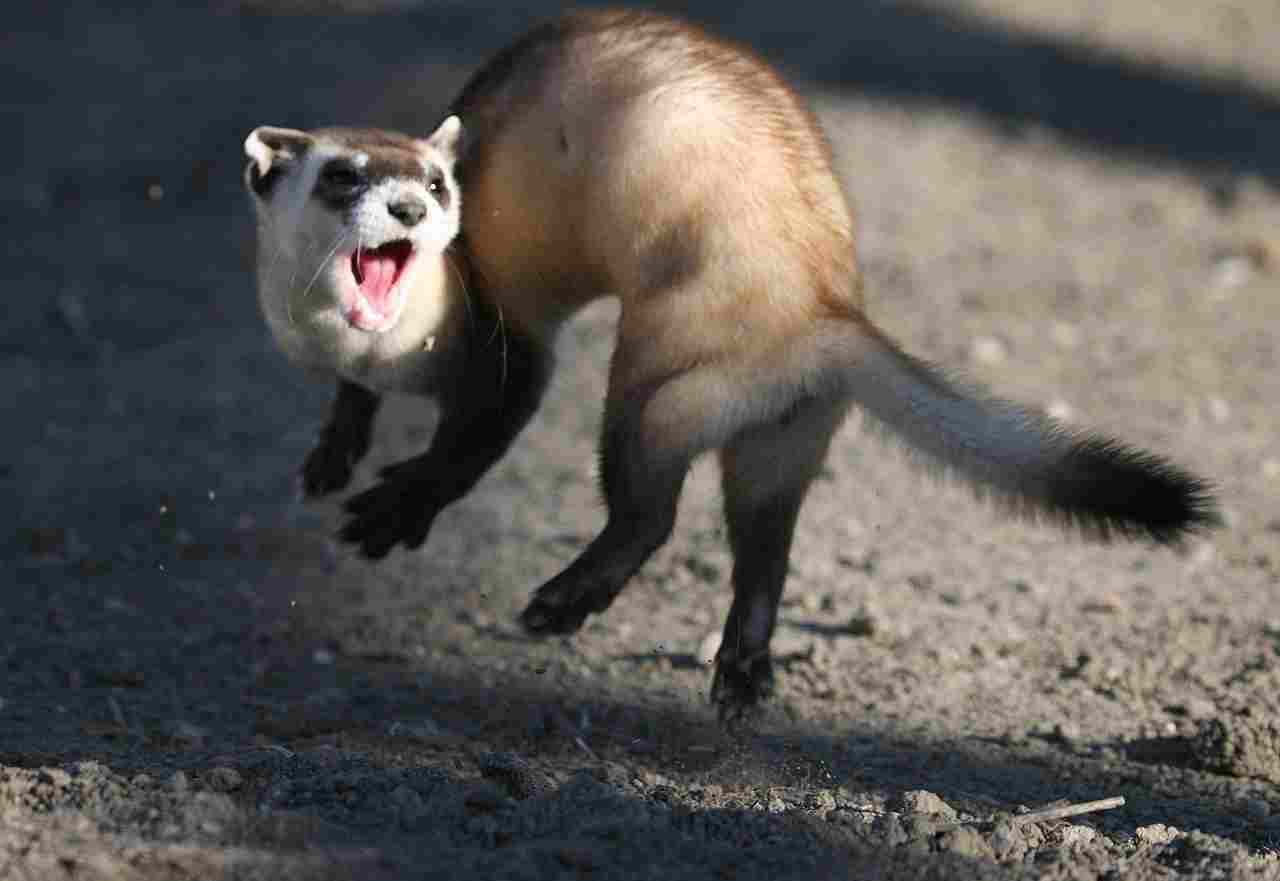
Stoat:
Well-adapted for swift and agile movements, facilitating hunting.
Seasonal color change enhances camouflage, contributing to its overall physical capacity.
Ferret:
Domestic ferrets may have varying physical capacities based on breeding and care.
Adapted for agility and compatibility with human environments.
Comparison:
Stoats exhibit a specialized physical capacity for hunting and survival in the wild.
Ferrets may have diverse physical capacities influenced by selective breeding and domestication.
Ecological Implications:
The stoat’s physical adaptations contribute to its success as a wild predator.
Domestic ferrets may display physical traits shaped by human preferences.
12. Habitat Preference(s):
Stoat:
Thrives in a range of habitats, including forests, grasslands, and tundra.
Adaptable to both cold and temperate climates.
Ferret:
Domestic ferrets are kept in human environments as pets.
Wild European polecats (ancestors of ferrets) inhabit diverse environments, including woodlands and grasslands.
Comparison:
Stoats exhibit a broader range of natural habitats.
Ferrets, in their domesticated form, are closely associated with human environments.
Ecological Implications:
Stoats contribute to ecosystem balance in various habitats.
Ferrets, especially when domesticated, may have indirect ecological effects linked to human activities.
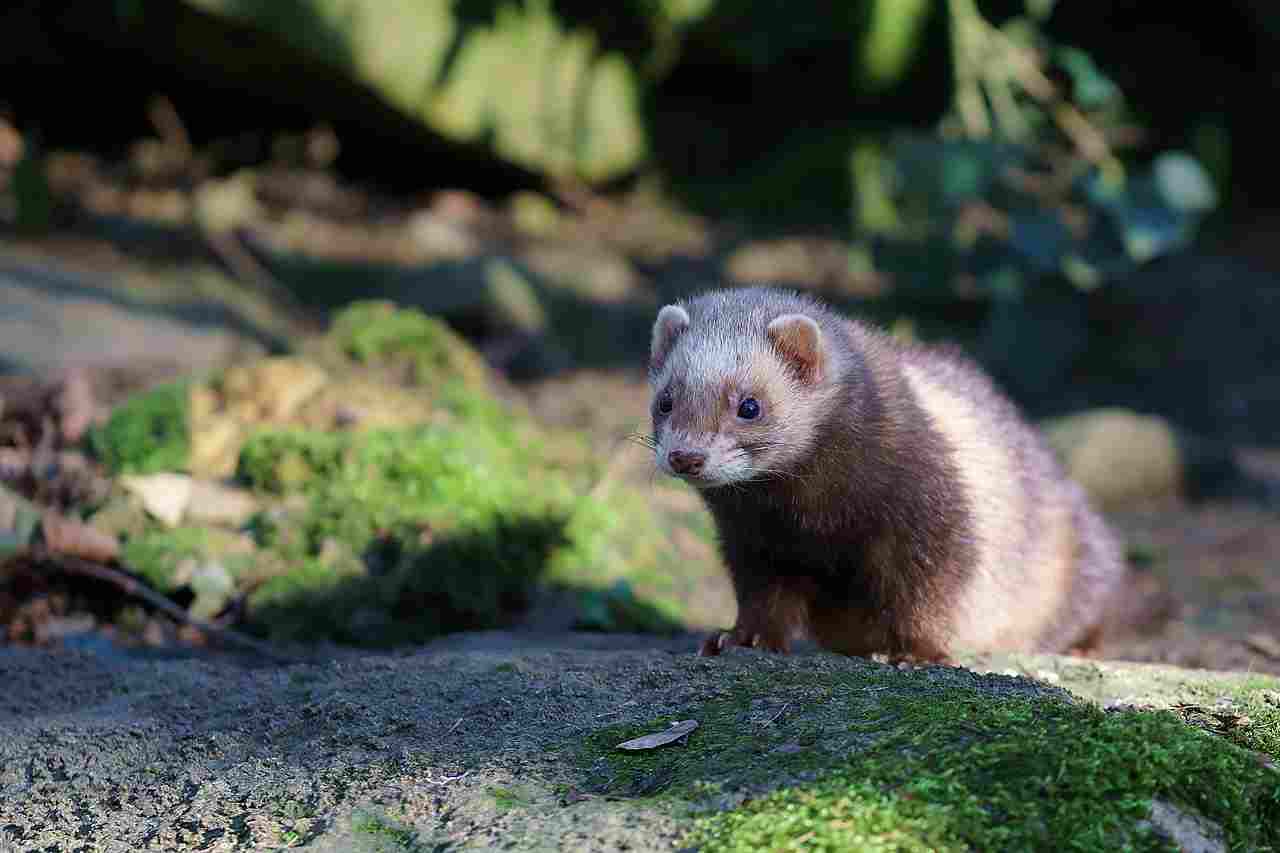
13. Tracks:
Stoat:
Paw prints typically show five toes with claw marks.
Tracks may reveal patterns of leaping and bounding.
Ferret:
Paw prints similar to stoats but can vary based on individual size and domestication status.
Domestic ferrets may leave tracks indoors or in areas close to human habitation.
Comparison:
Stoat tracks reflect wild, often predatory behavior.
Ferret tracks can vary, and domestic individuals may leave prints in controlled environments.
Ecological Implications:
Stoat tracks may indicate natural behaviors related to hunting and territorial movements.
Ferret tracks, particularly those of domesticated individuals, are influenced by human interactions and may lack ecological significance.
14. Lifespan:
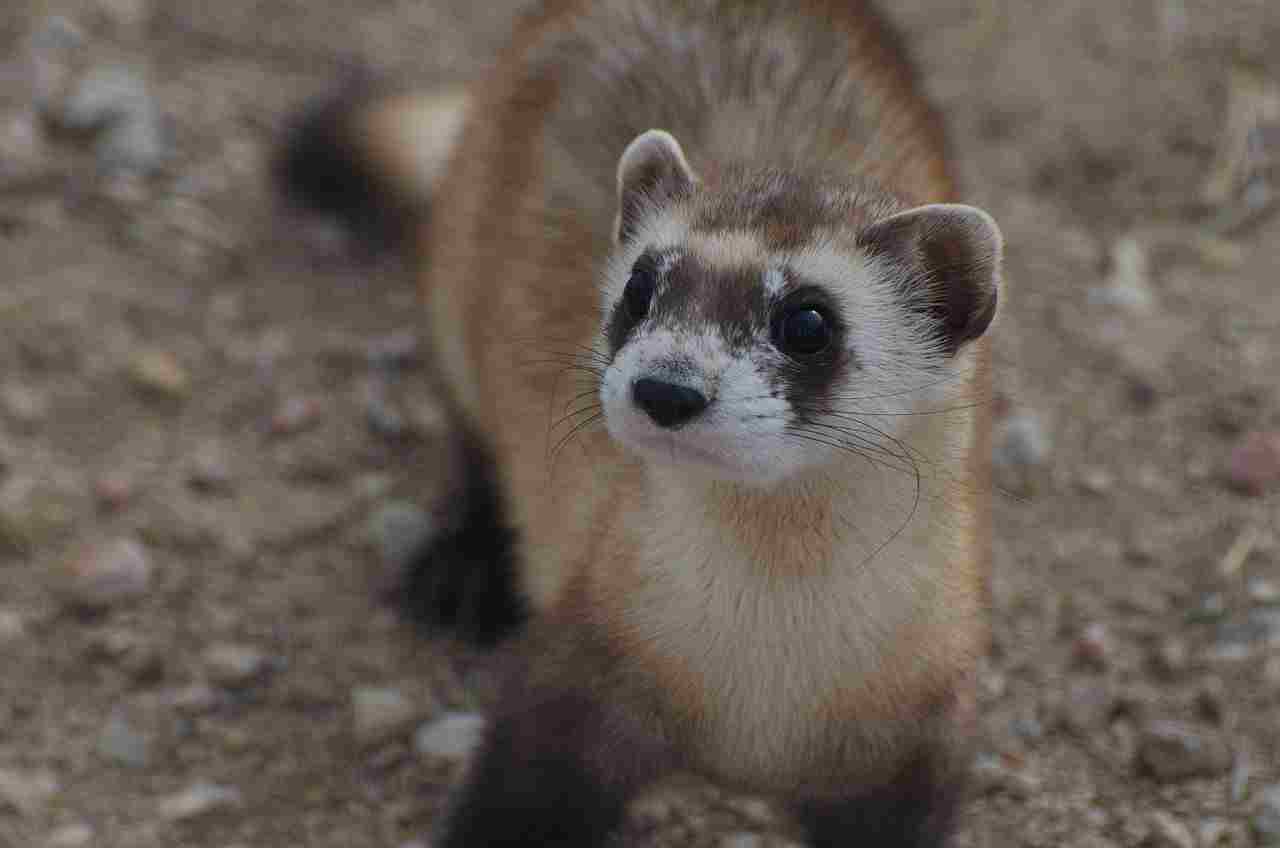
Stoat:
Typically lives 1 to 3 years in the wild.
Mortality rates can be influenced by factors such as predation, disease, and food availability.
Ferret:
Domestic ferrets generally live 5 to 10 years.
Lifespan can be impacted by genetics, diet, and veterinary care.
Comparison:
Ferrets generally have a longer lifespan, especially in domestic settings.
Stoats exhibit a shorter lifespan in the wild due to natural challenges.
Ecological Implications:
Stoats’ shorter lifespan is adapted to the challenges of a wild, predator-prey dynamic.
Ferrets’ longer lifespan may reflect the benefits of domestication and human care.
15. Mode of Feeding:
Stoat:
Carnivorous diet, preying on small mammals, birds, and insects.
Hunting strategies include stalking, pouncing, and pursuing prey.
Ferret:
Carnivorous, with a diet consisting of meat and commercially available ferret food.
Domestic ferrets may lack the need for active hunting if provided with prepared food.
Comparison:
Stoats actively engage in hunting as part of their natural behavior.
Ferrets, especially domestic ones, may rely on provided food and exhibit less active hunting behavior.
Ecological Implications:
Stoats contribute to natural population control of prey species in their ecosystems.
Domestic ferrets may have a reduced ecological impact due to reliance on human-provided food.
16. Intelligence:
Stoat:
Exhibits problem-solving skills in hunting and navigating diverse terrains.
Displays learning behaviors related to prey capture.
Ferret:
Known for curiosity and playfulness.
Domestic ferrets may exhibit problem-solving skills and can be trained for certain behaviors.
Comparison:
Both stoats and ferrets display intelligence adapted to their respective environments.
Ecological Implications:
Intelligence in stoats contributes to effective hunting strategies.
Domestic ferrets’ intelligence is often harnessed for interactions with human caregivers.
17. Social Behavior:

Stoat:
Generally solitary, except during the breeding season.
Males may have larger territories that overlap with multiple females.
Ferret:
Social animals that thrive in the company of other ferrets.
Domestic ferrets often benefit from companionship.
Comparison:
Stoats exhibit a more solitary lifestyle, with brief social interactions during mating.
Ferrets are inherently social animals, often living in groups.
Ecological Implications:
Stoats’ solitary nature may be linked to territorial behaviors and mating strategies.
Domestic ferrets’ social tendencies may have implications for their well-being in human settings.
18. Mode of Reproduction:
Stoat:
Seasonal breeding, typically in the summer.
Gestation period lasts around 280 days, with a variable delay in implantation after fertilization.
Ferret:
Induced ovulators, capable of breeding throughout the year.
Gestation period is shorter, around 42 days.
Comparison:
Stoats exhibit a more specific breeding season, influenced by environmental factors.
Ferrets can breed throughout the year, adapting to their domesticated environment.
Ecological Implications:
Stoats’ seasonal reproduction aligns with prey availability and environmental conditions.
Ferrets’ induced ovulation allows for flexibility in breeding, potentially influenced by human caretakers.
19. Parental Behavior:
Stoat:
Female stoats raise the young alone.
Weaning occurs around five weeks, and juveniles become independent.
Ferret:
Domestic female ferrets (jills) may raise kits (young) together.
Kits are weaned around 6 to 8 weeks, with continued maternal care.
Comparison:
Stoats exhibit solitary parental care.
Ferrets may engage in communal care, especially in domestic settings.
Ecological Implications:
Stoats’ solitary parenting aligns with their solitary lifestyle.
Domestic ferrets’ communal care may be influenced by domestication and the presence of multiple individuals in captivity.
20. Proximity to Human-Inhabited Areas:
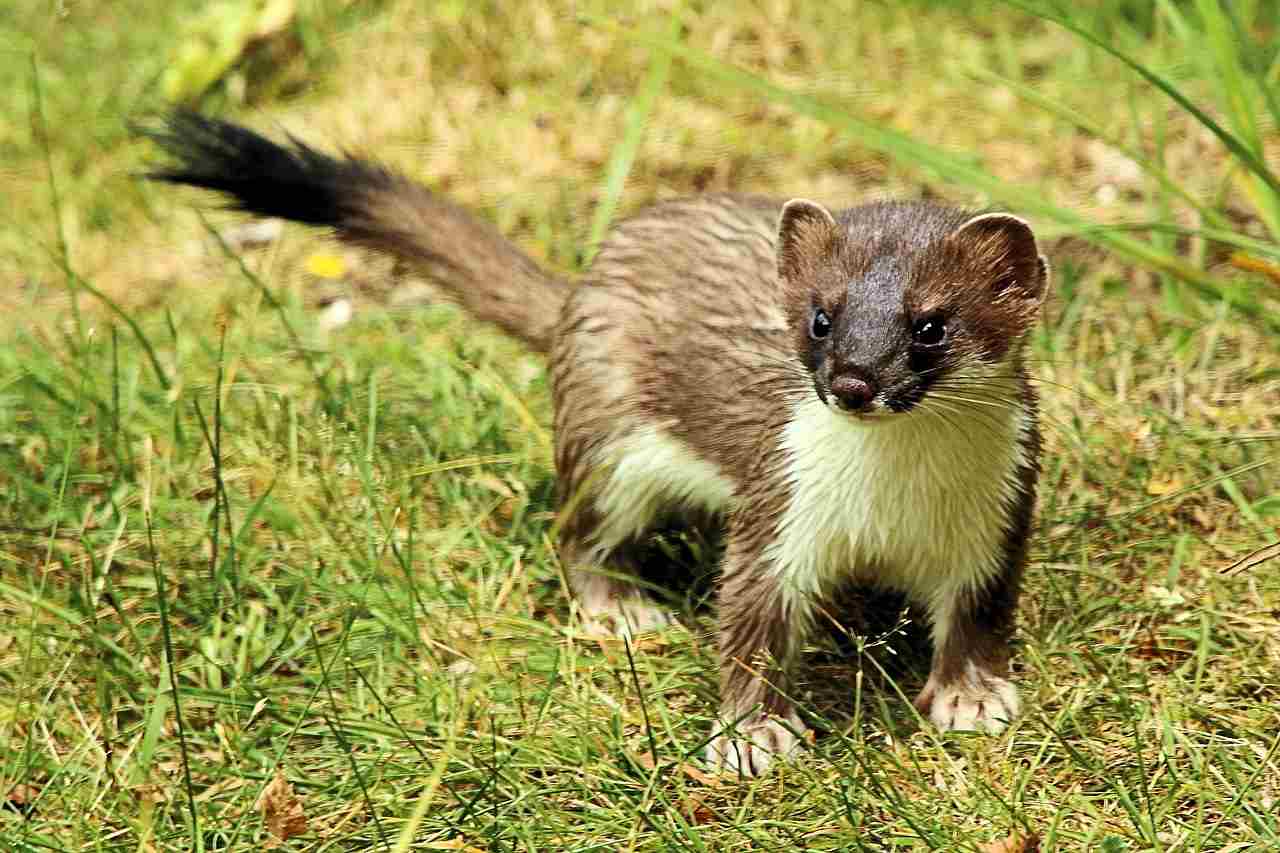
Stoat:
Generally found in a variety of natural habitats, with limited proximity to human settlements.
Can adapt to agricultural landscapes.
Ferret:
Domestic ferrets are kept as pets in human-inhabited areas.
Wild European polecats (ancestors of ferrets) may inhabit areas close to human activities.
Comparison:
Stoats primarily inhabit natural environments, with limited interaction with human settlements in the wild.
Ferrets, especially domesticated ones, are closely associated with human-inhabited areas.
Ecological Implications:
Stoats’ presence in natural habitats contributes to ecosystem dynamics.
Domestic ferrets’ proximity to humans may result in altered behaviors and ecological implications linked to pet care.
21. Behavior Toward Humans:
Stoat:
Generally elusive and avoids human interaction in the wild.
May display aggressive behavior if cornered.
Ferret:
Domestic ferrets are often sociable with humans, displaying playfulness and curiosity.
Can be trained for various activities.
Comparison:
Stoats are naturally wary of humans and may exhibit defensive behaviors.
Ferrets, especially those raised as pets, often seek human interaction and can be trained for specific behaviors.
Ecological Implications:
Stoats’ wariness toward humans contributes to their wild survival.
Domestic ferrets’ sociability with humans is a result of their domestication and close association with people.
22. Danger Posed to Humans:
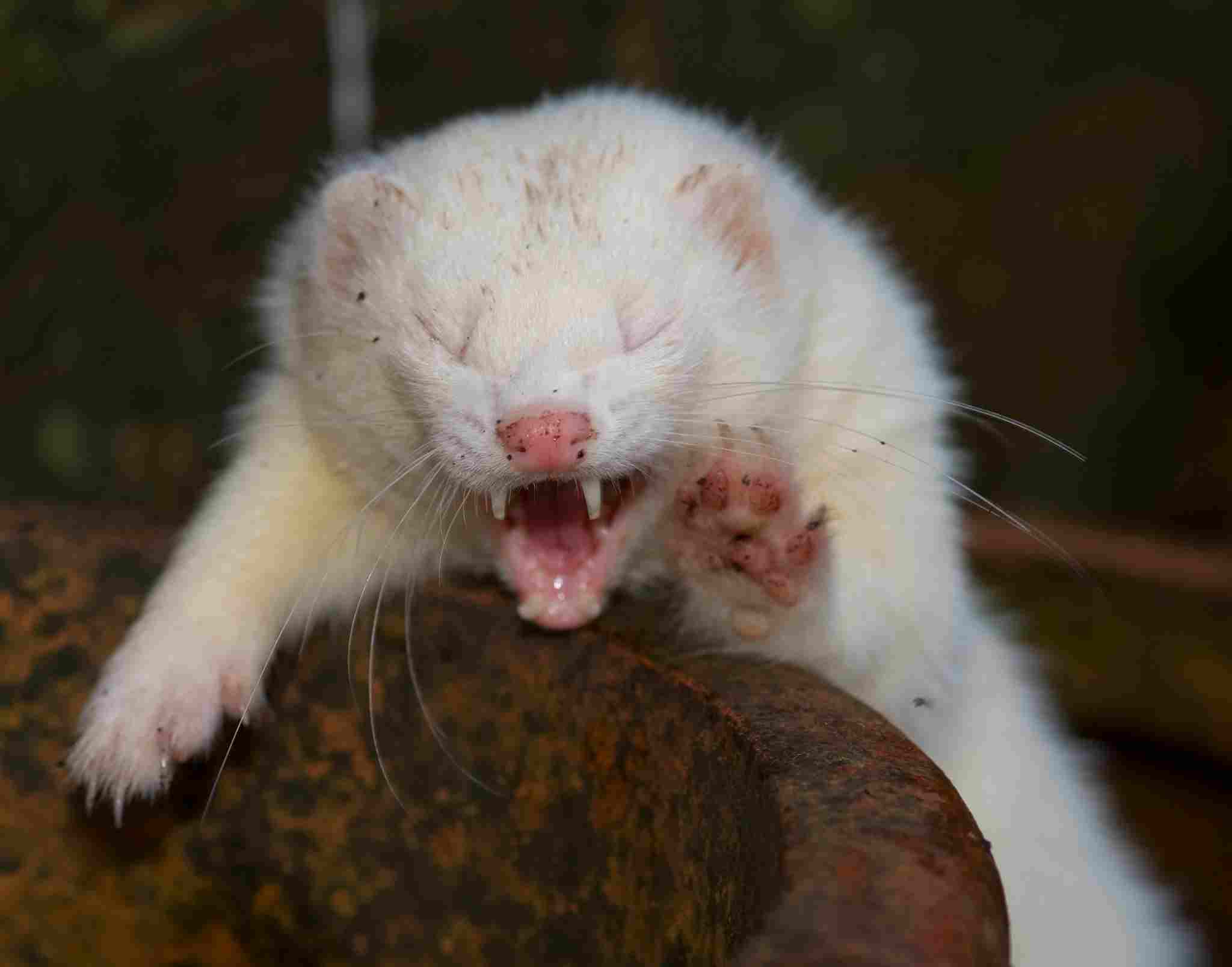
Stoat:
Generally not considered dangerous to humans.
May display defensive behavior if threatened but rarely poses a significant threat due to its size.
Ferret:
Domestic ferrets are not inherently dangerous.
Well-socialized and properly trained ferrets typically pose minimal risk to humans.
Comparison:
Stoats are not known for posing a danger to humans in the wild.
Ferrets are domesticated and usually pose little risk when appropriately cared for.
Ecological Implications:
Stoats’ limited danger to humans contributes to their coexistence in natural habitats.
Domestic ferrets’ lack of inherent danger is a result of selective breeding for docility.
23. Associated Precautions:
Stoat:
People encountering stoats in the wild should avoid provoking them.
Responsible observation from a distance is recommended.
Ferret:
Domestic ferrets may need proper handling to prevent biting.
Ferret-proofing indoor spaces is advised to ensure their safety.
Comparison:
Stoats require caution in the wild to avoid provoking defensive behavior.
Ferrets need responsible handling to prevent accidental bites, especially in a domestic setting.
Ecological Implications:
Awareness of stoats’ behaviors contributes to responsible wildlife observation.
Proper care of domestic ferrets ensures a safe coexistence with humans.
24. Conservation Status:

Stoat:
Generally classified as a species of “Least Concern.”
Populations are relatively stable, but localized declines may occur.
Ferret:
Domestic ferrets are not evaluated for conservation status as they are a widely bred and kept species.
Comparison:
Stoats have a conservation status based on their wild populations.
Ferrets, as domesticated animals, are not assessed for conservation status as they are bred for specific purposes.
Ecological Implications:
Conservation efforts may focus on maintaining healthy stoat populations in their natural habitats.
Domestic ferrets, not being a wild species, do not contribute to broader conservation discussions.
Summary of Comparison
Stoat vs. Ferret: Comparison Summary
Physical Characteristics:
Stoats have a slender build with brown fur in summer, transitioning to white in winter, while ferrets exhibit a more robust build with diverse coat colors.
Size and Weight:
Stoats are smaller and lighter than ferrets, with a body length of 12-16 inches and a weight of 6-12 ounces. Ferrets range from 18-24 inches and weigh 1.5-4 pounds.
Bite Force and Offensive Strategies:
Limited data on bite force, but stoats emphasize agility and sharp claws for hunting, while ferrets rely on a strong jaw and teeth.
Defensive Strategies and Speed:
Stoats employ agility and camouflage for defense, reaching speeds of 15-20 mph. Ferrets also exhibit agility, but specific speed data is unavailable.
Senses and Intelligence:
Stoats rely on sharp vision and smell for hunting, while ferrets, with enhanced hearing, exhibit curiosity and playfulness. Both display problem-solving skills.
Reproduction and Parental Behavior:
Stoats have a seasonal breeding pattern, while ferrets can breed throughout the year. Stoats exhibit solitary parental care, whereas ferrets may raise kits communally.
Habitat and Proximity to Humans:
Stoats thrive in diverse natural habitats, while ferrets, especially domesticated, are closely associated with human-inhabited areas.
Behavior Toward Humans and Danger:
Stoats are generally elusive and not considered dangerous. Domestic ferrets are sociable with humans, posing minimal risk when properly cared for.
Conservation Status and Lifespan:
Stoats are classified as “Least Concern” with stable populations and a lifespan of 1-3 years. Ferrets, not evaluated for conservation, may live 5-10 years, especially when domesticated.
Conclusion:
I. Similarities:
Both stoats and ferrets belong to the Mustelidae family and share common traits as carnivorous mammals.
II. Differences:
Stoats are wild predators with specific ecological roles, while ferrets, especially when domesticated, serve various roles as pets or working animals.
Stoats exhibit seasonal color changes for camouflage, while ferrets may have diverse coat colors due to selective breeding.
Stoats have a shorter lifespan in the wild, influenced by natural factors, whereas ferrets, especially domestic ones, may live longer under human care.
